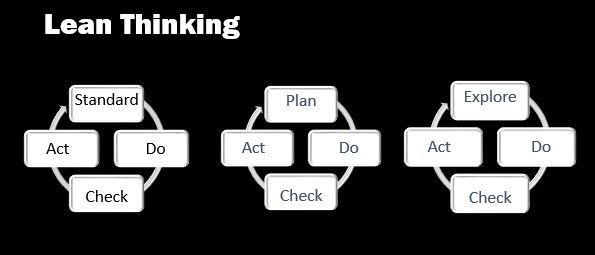I base my Lean Thinking on 3 principles. Standardization, Improvement, and Exploration. The little “i” of innovation is provided through SDCA and PDCA. Standard Work (SDCA) creates a can-do attitude and frees up time for problem-solving. Applying PDCA, allows you to “see” opportunities for improvement and leverages the resources in your environment. I like to use the term EDCA learned from Graham Hill to designate the Explore aspect of Lean. I view it as more of Design Type thinking content that allows for that collaborative learning cycle with a customer.
Companies need innovative practices. It is where development and the Big I of innovation (EDCA) occur. Companies need all three. These components along with your attitude influences and defines the Lean culture. PDCA is the glue. Without that mindset- it is difficult to traverse between the 3 and I think all successful companies have a mixture of all three. Some may be more innovative, some may be more standard, but having a practice in place for each, is what makes Lean successful (IMHO).
I was in a discussion the other night with Mike Rother on the adoption of Toyota Kata thinking in the Lean community. He asked me if I had viewed the Clayton Christensen video on YouTube where Mike had commented, “Professor Christensen explains why just pursuing efficiency is not enough, which is an important message for the next generation of Lean thinkers.” After viewing the video, my thoughts, drifted back to how well the Gateway of SDCA-PDCA-EDCA applied to this Christensen presentation.
Toyota Kata is documented in Mike Rother’s book Toyota Kata: Managing People for Improvement, Adaptiveness and Superior Results.
Lean Sales and Marketing: Learn about using CAP-Do

